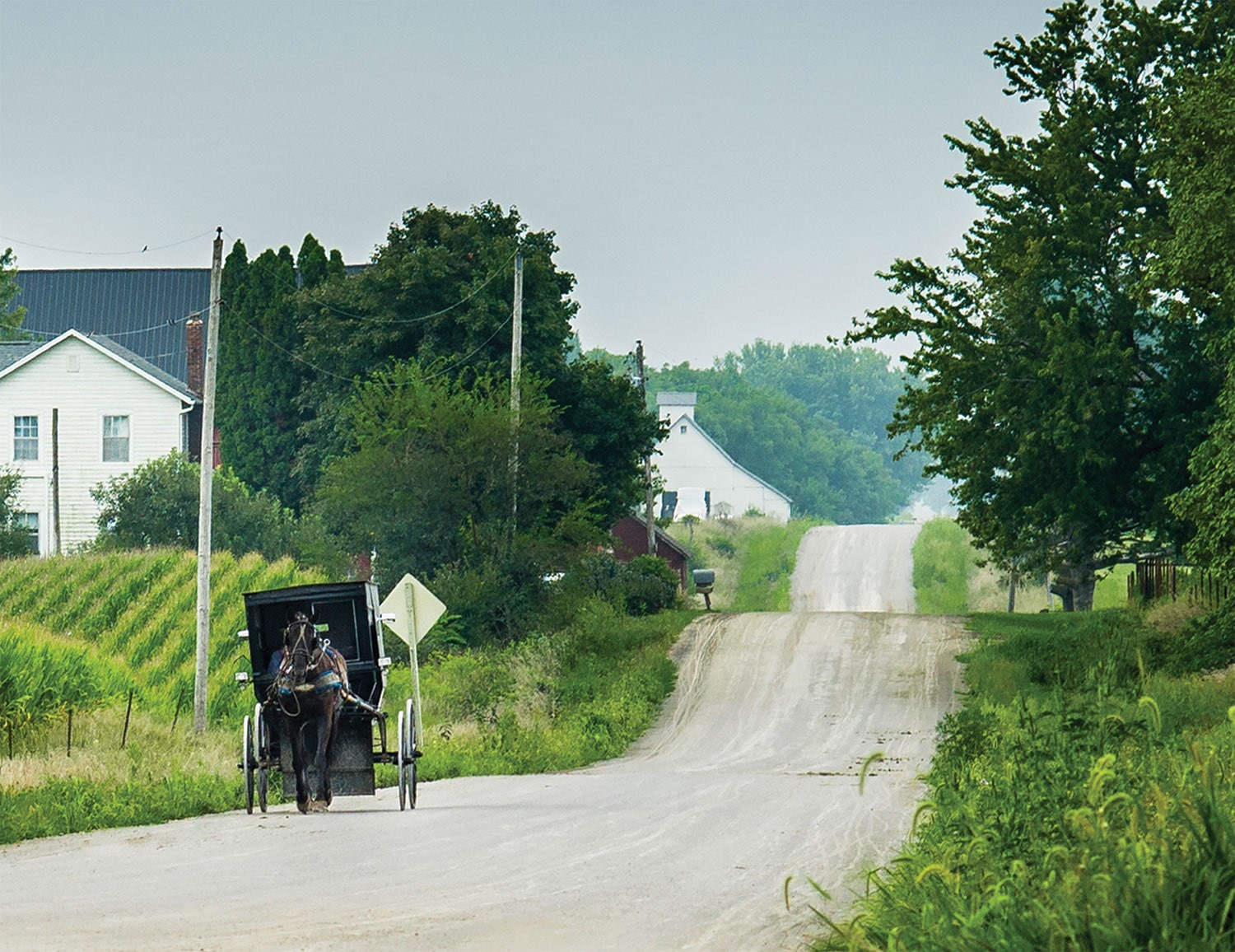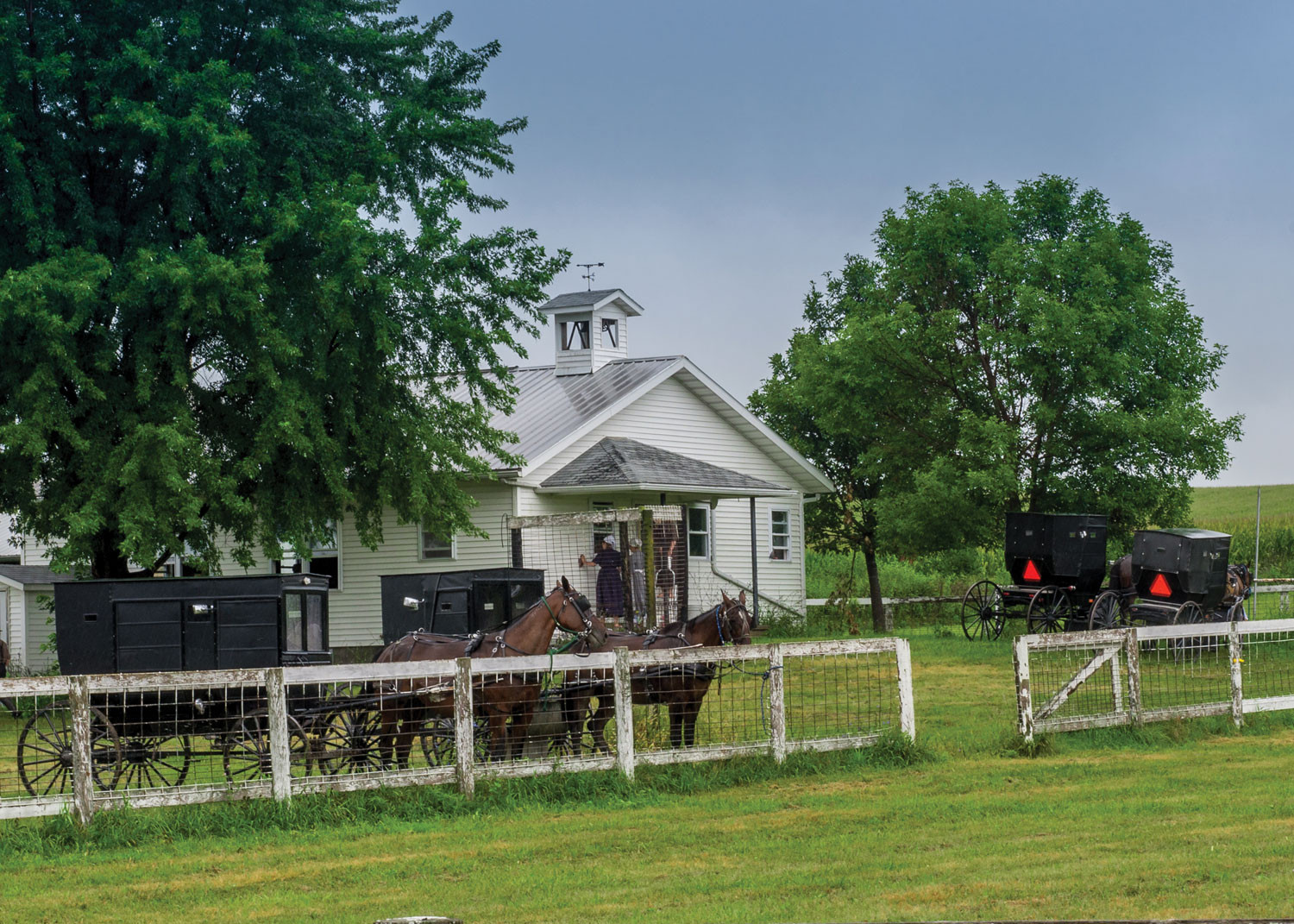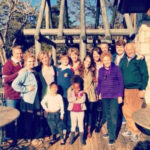When cancer touches a family, it tests their strength, resilience, and beliefs. For Amish families, this experience is deeply intertwined with their faith, community, and unique way of life. This article explores how Amish families navigate the challenges of cancer, drawing insights from their traditions, values, and interactions with modern medicine.
The aroma of cinnamon and apples warmly greeted me as Elson Miller, a 53-year-old farrier from Kalona, Iowa, welcomed me into his family home. In the basement, a scene of industrious domesticity unfolded: tables laden with jars of homemade applesauce, Loretta, his 49-year-old wife, tending to a steaming pot of apple remnants, and quilting squares neatly stacked, awaiting her touch during quiet moments. It was in this heart of their home that Elson, Loretta, and I discussed her journey with stage I pleomorphic spindle cell sarcoma, a rare soft tissue cancer.
As a cancer survivor myself, I sought to understand how the Old Order Amish community responds to cancer within their close-knit society. Kalona, nestled in rural eastern Iowa, is home to a significant Amish population, estimated between 1,200 and 1,500 out of just over 2,500 residents. Known for their separation from mainstream society and selective adoption of technology, the Amish primarily sustain themselves through farming, carpentry, and traditional crafts. Their children are educated in Amish-only schools, reinforcing their distinct cultural identity. During my visit, several Amish families graciously shared their personal experiences with cancer and healthcare, revealing a blend of deep-rooted faith and a pragmatic approach to modern medicine. While their unwavering faith in God was expected, I was particularly struck by the resourcefulness and openness to medical science that Amish families demonstrated in confronting cancer. They showed a willingness to embrace modern medical treatments while simultaneously valuing traditional home remedies, herbs, and vitamins.
 Amish family home with applesauce makingAlt text: Loretta Miller, an Amish woman and cancer survivor, prepares applesauce in the basement of her family home in Kalona, Iowa, showcasing the industrious lifestyle of an Amish Family.
Amish family home with applesauce makingAlt text: Loretta Miller, an Amish woman and cancer survivor, prepares applesauce in the basement of her family home in Kalona, Iowa, showcasing the industrious lifestyle of an Amish Family.
Putting Faith at the Forefront: An Amish Family’s Response to Diagnosis
“Once the shock of the diagnosis sinks in, then you submit to the Lord’s will.” —Elson Miller
Loretta vividly recounted the day in December 2005 when cancer entered their lives, a moment paradoxically intertwined with the joy of expecting their youngest son, Dwight. During a routine ultrasound, intended to investigate a blood clot, Loretta’s doctor discovered a lump in her groin. Seven weeks after Dwight’s birth, the lump was surgically removed at Washington County Hospital. Elson described the doctor’s blunt delivery of the diagnosis as jarring, especially considering Loretta’s recent childbirth and the demands of caring for a newborn.
“The doctor came in right after surgery—he was a young doctor—and said, ‘Well, it’s cancerous,’” Elson recalled, emphasizing the agonizing 18-day wait for the pathology results to confirm the diagnosis.
Loretta’s thoughts immediately turned to her family. “With my oldest [daughter] Elnora in the eighth grade and four preschoolers at home, I thought, how will I raise them?” she shared, her voice filled with emotion as she revisited those anxieties. “How will Elnora, just 14, teach the others to sew, can [fruits and vegetables], do the things they need to know? They’re not ready. They are too young for me to leave them.” The weight of responsibility for her young family amplified the fear of the unknown.
 Amish schoolhouse in rural IowaAlt text: Children attend an Amish schoolhouse in a rural setting, reflecting the community-focused upbringing within an Amish family and their distinct educational system.
Amish schoolhouse in rural IowaAlt text: Children attend an Amish schoolhouse in a rural setting, reflecting the community-focused upbringing within an Amish family and their distinct educational system.
Ultimately, Loretta’s cancer was diagnosed as stage I, localized to the nerve sheath in her groin without spreading. However, the treatment regimen was demanding. For over five weeks, Elson and Loretta made daily trips to Mercy Hospital in Iowa City, about 20 miles from Kalona, for radiation therapy, all while caring for their newborn and eight other children. The aftermath of treatment brought its own challenges: intense pain, scarring, and partial paralysis in her right leg due to nerve damage.
“It took me three years to get [the use of] my leg back,” Loretta explained. “I kept walking, pushing myself. It was willpower and faith in God that got me through.” Her recovery journey underscores the Amish values of perseverance and reliance on faith in the face of adversity.
Seeking Guidance and Care Within and Beyond the Amish Family
“God made our bodies to heal, [to] take care of themselves.” —Herman Yoder
Within the Amish community of Kalona, Herman Yoder, 70, and his wife Emma Grace, 53, serve as initial points of contact for health concerns. Herman’s exemption from military service during the Vietnam War, due to the Amish commitment to pacifism, led him to work as an orderly in an Oklahoma hospital emergency room. This experience, coupled with years of caring for his late wife who suffered from rheumatoid arthritis, positioned him as a trusted health advisor within his community.
“I got my education in the basics of home remedies, treating cuts and bruises, taking vitals, determining serious and less urgent cases through on-the-job ‘classes’ from 1969 to 1971,” Yoder recounted. “I learned to rely on my experiences, the school of hard knocks, to teach me what I know about health and illness.” His practical, experience-based knowledge is highly valued.
Despite his eighth-grade education, Herman is affectionately known as “Dr. Yoder.” From his home, he offers advice on simple home remedies for common ailments. More importantly, he assesses symptoms and guides individuals on when to seek professional medical attention, typically at Mercy Hospital or University of Iowa Hospital in Iowa City. This blend of traditional wisdom and guidance towards modern medical facilities demonstrates a balanced approach to healthcare within the Amish family and community.
 Amish countryside in Kalona, IowaAlt text: A scenic view of the rural landscape in Kalona, Iowa, where Amish families live and maintain their traditional way of life, often in close-knit communities.
Amish countryside in Kalona, IowaAlt text: A scenic view of the rural landscape in Kalona, Iowa, where Amish families live and maintain their traditional way of life, often in close-knit communities.
Like many, some Amish individuals and families seek a combination of alternative and conventional therapies. In August 1980, Verna Bender, now 63, discovered lumps on her neck while breastfeeding her second child. A local clinic visit led to a chest X-ray at Mercy Hospital, revealing potential concerns.
“When [Verna] came home from that doctor, she had quite a load to carry,” Perry, her 63-year-old husband, described, recalling Verna’s emotional burden after facing the initial medical uncertainty alone. Subsequent tests, including a CT scan at University of Iowa Hospital, hinted at a serious condition.
“The doctor said she had Hodgkin’s disease, that it was a malignancy of the lymph gland, was treatable, curable, but wouldn’t use the word ‘cancer,’” Perry noted, expressing frustration with the indirect communication. “I don’t know why [the communication] couldn’t be more direct.”
Dissatisfied with the perceived slow pace of diagnosis and treatment planning, the Benders sought an alternative approach from a doctor in Kentucky. This alternative regimen included colon cleansing and a carrot juice diet. However, by December 1980, Verna’s health deteriorated significantly. A return visit to University of Iowa Hospital in January 1981 revealed stage IV Hodgkin lymphoma. The medical recommendation was six months of chemotherapy.
Despite an initial warning about potential infertility from chemotherapy, Verna went on to have seven more children and remained cancer-free for decades. In January 2016, she was diagnosed with stage II sigmoid colon cancer. She underwent “mild chemo” at St. Luke’s Hospital in Cedar Rapids, Iowa. Frustration with the pace of care at St. Luke’s led the Benders to seek treatment in Tijuana, Mexico, where Verna received surgery and chemotherapy. Since returning, she has had benign polyps removed but has remained free of colon cancer recurrence for over two years. Verna’s story exemplifies the Amish family’s proactive approach to seeking diverse medical solutions and their resilience in navigating complex health challenges.
Overcoming Distance: Amish Family Travel for Medical Care
Transportation to medical appointments presents unique considerations for Amish families, given their restrictions on driving cars.
- Amish individuals may utilize cars, vans, buses, or trains, provided a non-Amish driver operates the vehicle. The Benders, for instance, traveled to Mexico by hired car to Mount Pleasant, Iowa, and then by Amtrak train to San Diego, with onward car transport to Tijuana.
- Air travel is generally reserved for emergencies, such as critical airlifts.
- Phone shacks serve as communication hubs for arranging transportation. The Budget, an Amish and Mennonite publication, includes transportation and ride-sharing service advertisements. Myron Thirtle, a non-Amish driver who frequently assists the Amish, mentions an “Amish hotline” for transportation coordination and cost-sharing among those traveling in similar directions. These resourceful travel arrangements highlight the community’s support network in ensuring access to necessary medical care, even when it requires navigating geographical barriers.
 Myron Thirtle driving Amish familyAlt text: Myron Thirtle, a non-Amish driver, transports members of an Amish family in his car, illustrating how the Amish community utilizes external support for travel needs, particularly for medical appointments.
Myron Thirtle driving Amish familyAlt text: Myron Thirtle, a non-Amish driver, transports members of an Amish family in his car, illustrating how the Amish community utilizes external support for travel needs, particularly for medical appointments.
Community and Healthy Living: Cornerstones of Amish Family Life
“We believe we should rely on our family and community to help us through an illness.” —Elson Miller
During my stay with Henry and Mary Swartz, their home revealed a focus on preventative health. Their small store offered health-related publications, alongside locally sourced cheeses, homemade breads, and garden produce.
Physical activity is integral to Amish life, embedded in their daily routines of farming and manual labor. They adhere to a lifestyle that prohibits drugs, alcohol, and tobacco, and their diet typically emphasizes organic meats, fruits, and vegetables. This commitment to healthy living, fostered within the Amish family and community, likely contributes to their overall well-being.
My glimpse into the lives of Old Order Amish families in Kalona revealed a deep commitment to God, family, and community. While their lifestyle may appear “plain,” it is rich in values that provide strength and resilience in the face of health challenges like cancer. They demonstrate a balanced approach, respecting modern medicine while valuing their traditions.
Five Key Lessons from Amish Cancer Experiences
My own journey as a two-time breast cancer survivor (diagnosed in 1993 and 2004) led me to believe I had a comprehensive understanding of living with cancer. However, my time with the Amish community in Kalona broadened my perspective, revealing unique cultural insights into health and illness. Here are five key lessons learned:
- Faith is paramount. Amish families facing cancer turn to their deep-seated faith for guidance and strength. Faith is not just a belief system but a practical framework for navigating life’s most challenging moments.
- Community is crucial. Elson Miller’s words, “We trust our community to help us through illness,” resonate deeply. The Amish community provides multifaceted support – emotional, practical (childcare, household tasks), and even financial aid for medical expenses. This communal support system strengthens the Amish family’s ability to cope with cancer.
- Persistence is vital. Amish families demonstrate a proactive approach to healthcare, often seeking second opinions and exploring various treatment options, both conventional and alternative. Their medical decisions are driven by practicality, timeliness, and a belief in the therapy’s effectiveness.
- Openness to different approaches matters. The Amish embrace a blend of modern medical treatments and traditional home remedies, including herbal remedies, vitamins, and natural therapies passed down through generations. This integrated approach reflects a pragmatic and open-minded attitude towards health and healing.
- Industriousness is a coping mechanism. Even amidst serious health concerns, the Amish maintain their industrious lifestyle. During conversations about cancer, women continued with tasks like preparing food or quilting, while men tended to farm duties. This dedication to productive activity is a source of strength and resilience in facing adversity. This industriousness extends to their approach to dealing with health challenges, facing them with practical action and determination.
When asked about managing the financial burden of cancer care, I learned about the Amish community’s self-reliance. They do not participate in Social Security or Medicare and generally forgo private health insurance.
Instead, the Kalona Amish community has established a system of internal support and negotiation with healthcare providers. Community leaders act as liaisons, negotiating costs and setting up payment plans with local hospitals. This often results in reduced costs comparable to insurance rates.
“We take care of our own,” Elson Miller emphasized, highlighting the Amish principle of mutual aid, with the church providing support when necessary. “If we don’t help our friends and neighbors and church members, then who would we be willing to help?” This ethos of community responsibility and mutual support underscores the Amish family’s approach to navigating not only cancer but life’s challenges as a whole.
Cynthia Ryan is a breast cancer survivor residing in Birmingham, Alabama.
Cancer Today magazine offers free subscriptions to cancer patients, survivors, and caregivers in the U.S. Subscribe here to receive quarterly issues.


